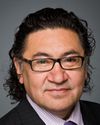With regard to the Canadian Firearms Advisory Committee established under the authority of the Department of Public Safety and Emergency Preparedness Act: (a) what is the current list of committee members; (b) on what date were each of these members appointed or reappointed; (c) what is the term of appointment for each member, including dates; (d) what is the position on the committee of each member; (e) how many times has the committee met since its creation, (i) on which dates, (ii) in which locations; (f) what were the topics discussed at each meeting; (g) which meetings has the minister participated in, by phone or in person; (h) how many departmental staff are assigned to support the committee; (i) what is the budget provided for the committee; and (j) how much has the committee spent on travel and hospitality since its creation, broken down by year?
House of Commons Hansard #35 of the 41st Parliament, 2nd Session. (The original version is on Parliament's site.) The word of the day was ukrainian.










